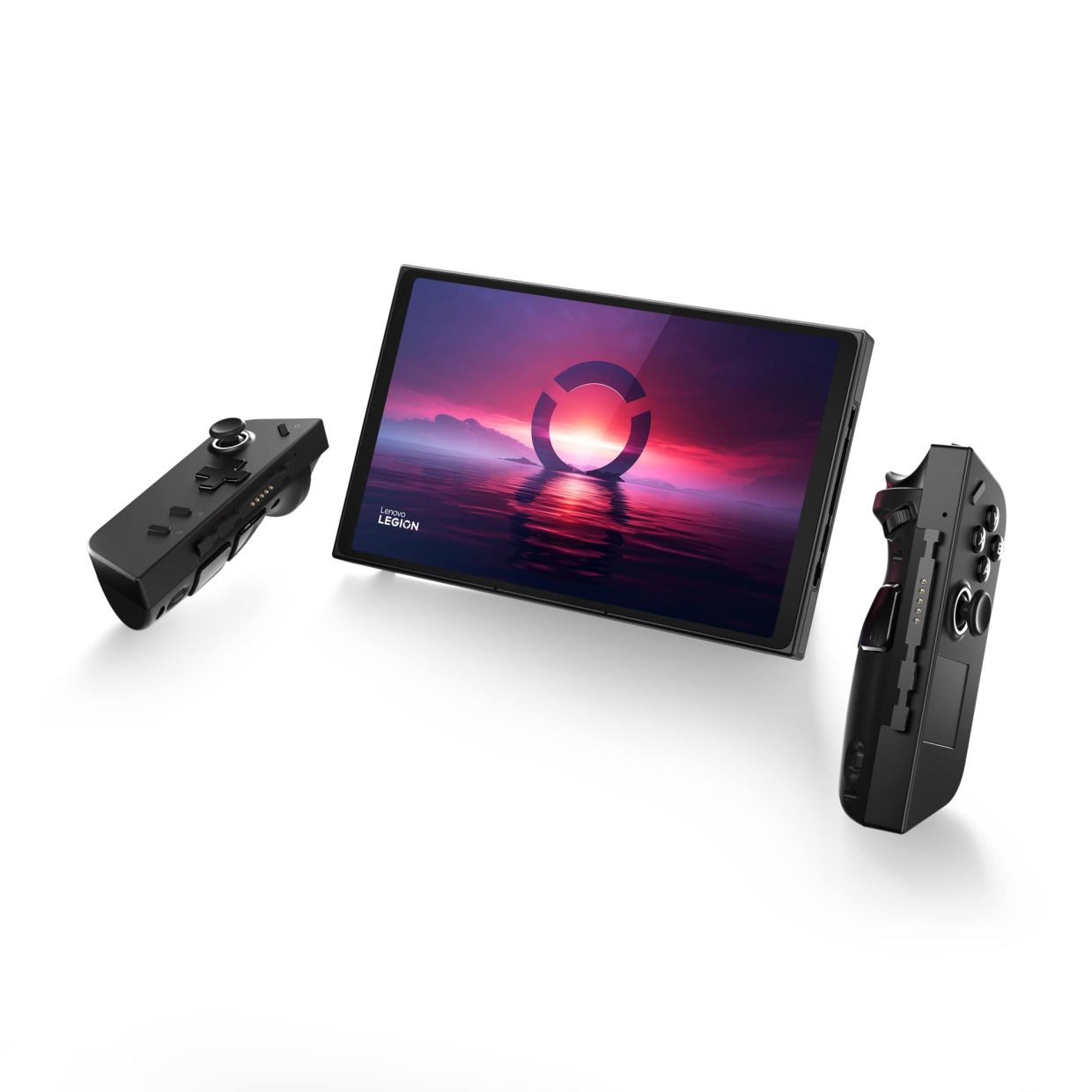While others have kept things compact, Lenovo has gone large with the Legion Go gaming handheld in more ways than one. — Photos: Lenovo
From the moment I laid my eyes on the Lenovo Legion Go, it screamed big. It had a big screen, big detachable controllers, a big profile, and even a big carrying case.
And the “bigness” turns out to be both the Legion Go’s greatest blessing and curse.
Let’s start things off with what’s to like: the 8.8in IPS display is huge, and those extra inches make a real difference in immersing you in a game.
When compared with other handheld devices from major brands in the category, the Legion Go comes out on top in terms of sheer screen size.
It easily bests the Steam Deck (7in), Steam Deck OLED (7.4in), ROG Ally (7in), and even the newly released MSI Claw (7in) by no small margin.
And that’s not the only win against the other options on the market, as it has a high-resolution 2,560 x 1,600p IPS display that beats the largely 1080p (1200p on the Steam Deck OLED) competition.
Even the 144Hz refresh rate is higher than what the others have to offer, with even the best models topping out at 120Hz, but it lacks the variable refresh rate offered in other devices.
So how does this big win also make the Legion Go fall short? Well, it all comes down to practicality.
Sizing it up
The extra pixels make the operating system, and especially the text, look sharp, with the 144Hz smoothness shining when navigating the device.
But in games, this marks a point where players have to decide on what to compromise – resolution (WQXGA vs full HD) or frame rates – or try to strike a balance between the two.
During my limited time with the handheld, I opted to prioritise graphics in order to push the Legion Go to the limit.
The AMD Ryzen Z1 Extreme accelerated processing unit (APU) powering the review model was no slouch, as it could handle any modern title I threw at it.
In my tests, the Legion Go ran last year’s smash hit RPG (role-playing game) Baldur’s Gate 3 with the resolution cranked up to WQXGA, though it was rather sluggish at around 20fps (frames per second) with some dips in Act 3, a latter part of the game known to be more demanding.
By playing around with the settings, including upscaling with AMD’s FidelityFX Super Resolution (FSR) 2.2, you can hit about 50fps. Both Forza Motorsport and Dirt Rally 2.0 hovered between 20fps and 30fps with graphics maxed out, while Elden Ring sat at 30fps, sometimes dipping as low as 20fps.
For those prioritising smooth gameplay, it’s advisable to lower the resolution. Also, opt for in-game FSR where available, or utilise Radeon Super Resolution (RSR) from the Legion Go’s menu if the game lacks native FSR support.
In terms of thermal management, there are three modes available: Quiet, Balanced and Performance. All titles were played using the Performance mode to ensure peak performance, albeit at the expense of increased heat and noise levels.
However, despite AMD stepping in with RSR and FSR, it still feels like you are not getting the best out of the screen size and resolution, but there is a silver lining: the Legion Go can be connected to an external graphics card via the Thunderbolt 3 port.
This would increase the graphics performance but would also incur a hefty investment.
Going the extra mile
Lenovo has included two USB-C ports for charging – one on top and another at the bottom – making it convenient to have it plugged in for power anytime.
It also fitted the microSD card slot away from the heatsink vent, a good move as last year’s Asus ROG Ally gaming handheld caused the SD card reader to malfunction due to heat from the vent. This issue was later fixed through a software update.
The only questionable design element are the speakers – instead of firing forward, they fire upwards – but you have the option of using a wired headset.
Another neat idea is that the right controller can be detached and turned into a mouse, which Lenovo has dubbed “first-person shooter mode”.
As the controller is held vertically to be used as a mouse, it offers better ergonomics, though this takes some getting used to.
The controller’s buttons are clicky and satisfying, with the joysticks on the handheld utilising Hall effect sensors, making them more precise to control and less prone to stick drift than traditional potentiometer-based joysticks.
Hall effect joysticks are somewhat of a trend right now, with third-party accessory providers offering modules that users can swap into existing handhelds like the ROG Ally and Valve Steam Deck, so it’s nice to see Lenovo take the initiative to include the tech by default.
However, the right controller wiggles when attached to the screen in handheld mode, and it’s uncertain if this issue is limited to the review unit, but it’s rather annoying.
Also, the Legion Go, at 850g, is quite a bit heavier than the competition – the closest in weight is the original Steam Deck at 669g.
This can make using it in handheld mode tiring and not as portable as the more compact options.
Under gaming load, the battery life on the Legion Go is about two hours, which is not amazing, but it’s what you’d expect from such a device.
There are two versions of the Legion Go, one powered by an AMD Ryzen Z1 (RM3,699) and the other by the more potent AMD Ryzen Z1 Extreme (RM3,999). As it’s only a RM300 price difference, you might as well go the whole hog.
All in all, if you don’t mind sacrificing portability for power and screen size, then the Legion Go is worth checking out.
You will just have to spend a little time tweaking the settings to your liking and have the space to prop it up on its robust stand.
Legion Go
(Lenovo)
Windows 11 gaming handheld
DISPLAY: 8.8in WQXGA (2,560 x 1,600 pixels)
CONNECTIVITY: USB Type-C, Bluetooth 5.3, WiFi 6E
PROCESSOR: AMD Ryzen Z1 Extreme or Ryzen Z1
MEMORY: 16GB RAM; 512GB storage
PRICE: RM3,699 for the Ryzen Z1; RM3,999 for the Ryzen Z1 Extreme
RATING: 3.5 stars
PROS: Stunning display; handles most modern titles; two USB-C ports for charging; offers versatility with “mouse mode”; features extra configurable buttons.
CONS: Short battery life; heavy and bulky.








